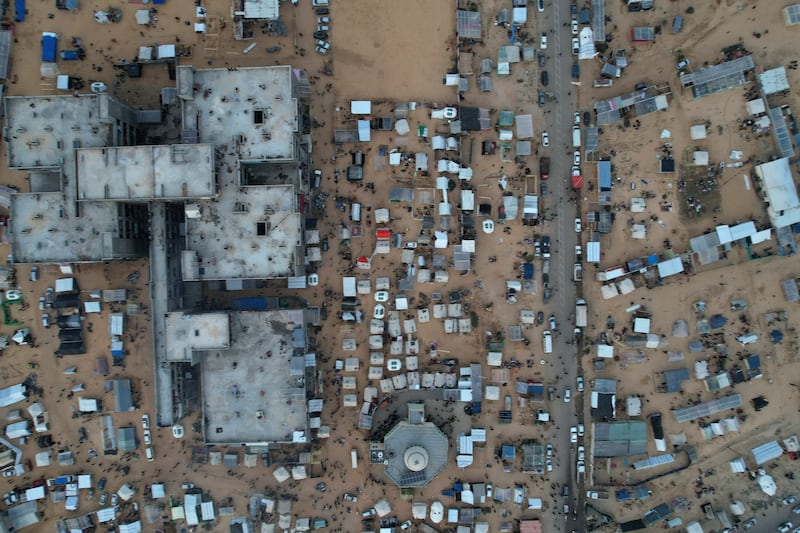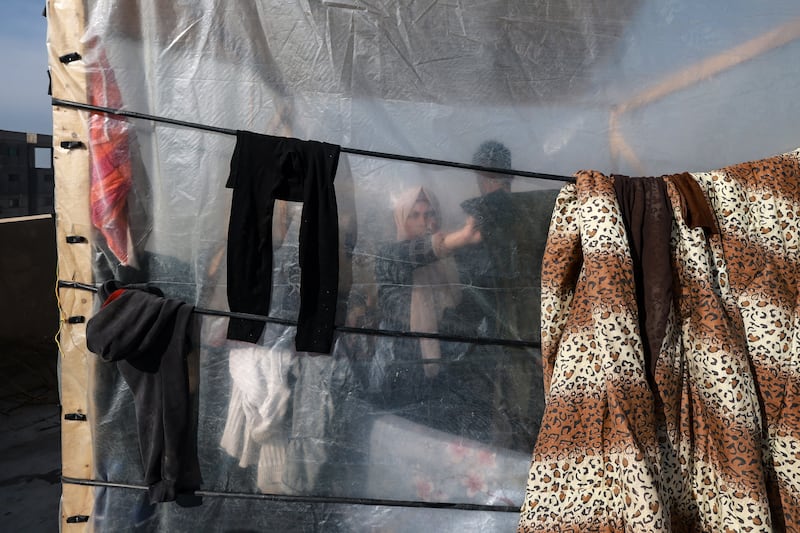The main reason Israel’s heavy bombardment of the Gaza Strip for nine weeks has not pushed hundreds of thousands of Palestinians into Egypt is that country’s heavily fortified border and Cairo’s ironclad determination to keep it closed.
But pressure is building. Israel has been pushing Gaza’s 2.2 million residents relentlessly south as its forces seek to destroy Hamas’s military wing and its infrastructure, and about 85 per cent of the population has been displaced. Hundreds of thousands of displaced people are now living in squalid, cramped conditions in Rafah, Gaza’s southernmost region, right along the border with Egypt.
The bleak conditions have increased fears that the border with Egypt could be breached, allowing a large number of Palestinian refugees to enter Egypt, potentially destabilising an Arab ally of the US.
Israeli officials have said they have no intention of pushing Gaza residents into Egypt, and Egypt’s government has long opposed letting Gaza residents seek refuge in the Sinai Peninsula, fearing that Israel will never let them return home and that Hamas and other militant groups, who are no friends of the government in Cairo, might set up operations there.
Satellite imagery released this week puts the number of people near the border in stark relief, showing large numbers of makeshift shelters in the area of Tel al-Sultan in the Rafah region. Comparisons with photographs of the same area taken last month show that the density of displaced Gaza residents has skyrocketed since Israel began issuing evacuation orders this month for parts of Khan Younis, a larger city six miles to the north.

The images correspond with reports from officials of relief organisations, who have warned that southern Gaza is not equipped to provide even basic services to the hundreds of thousands of displaced people who have ended up there.
Many people have only crude, improvised shelters to protect them from the elements as winter sets in, and each day is a struggle to get adequate food and clean water. Toilets are scarce. Although Rafah is one of the few cities in Gaza to receive aid shipments in recent weeks, hunger and communicable disease are still spreading rapidly, aid groups and United Nations officials say.
Israel launched its bombardment and ground invasion after Hamas, which has ruled Gaza for 16 years, carried out a surprise assault on towns in southern Israel, killing about 1,200 people, mostly civilians. Since then nearly 19,000 people have been killed by Israeli air strikes and other military operations in Gaza, according to Gaza health officials.
Early in the war Israel declared the entire northern half of Gaza an evacuation zone, sending people streaming to the south, where they thought they would be safe. Then Israel ordered the evacuation of parts of the south too, forcing many people who had already fled the north to move again.
Rafah was home to a few hundreds of thousands of people before the war, and its population has skyrocketed in recent weeks. People fleeing the air campaign in the north arrived early in the war even though Israel has continued to bombed targets in Rafah as well. Tens of thousands more have arrived this month, aid groups say, clustering the areas of Tel al-Sultan, and al-Mawasi, farther west on the Mediterranean coast.
The long history of Palestinians being displaced during their 75 years of conflict with Israel has left their leaders and their Arab neighbours worried that an exodus of Gaza residents into Egypt would become permanent.
To protect itself from such a scenario and to forestall an influx of Hamas and other Gaza militants, Egypt has spent years fortifying its 7.5-mile border with Gaza.

Over the past decade Egyptian forces have flooded and destroyed a network of smuggling tunnels under the border and have strengthened the barrier that runs along it. In some places that barrier now consists of a towering metal wall with fencing on top to keep people from climbing over it, in addition to underground barriers to prevent the digging of new tunnels.
Between 2013 and 2015 Egypt also evicted thousands of people from their homes and destroyed more than 3,000 structures along its side of the border to create a buffer zone, according to a report by Human Rights Watch. Since the current war began the Egyptian army has added more fortifications, erecting sand barriers and stationing tanks and other military vehicles near the border, according to local residents.
At the same time, on the Gaza side, Hamas, whose militants are busy fighting Israel, has largely abandoned border security.
So far Egypt’s fortifications appear to be strong enough to keep Gaza residents from slipping over the border. But security at the crossing is light, and a large angry crowd might be able to push through, according to people who have gone through the crossing recently. Another risk is that new holes are opened in the barrier either by errant Israel strikes or by militants or residents with explosives seeking a way out.
That is not without precedent. In 2008 Hamas blew holes in the barrier and tens of thousands of Gaza residents rushed through, using their visit to stock up on everything from cigarettes to satellite dishes before heading back to their besieged territory. – This article originally appeared in The New York Times











